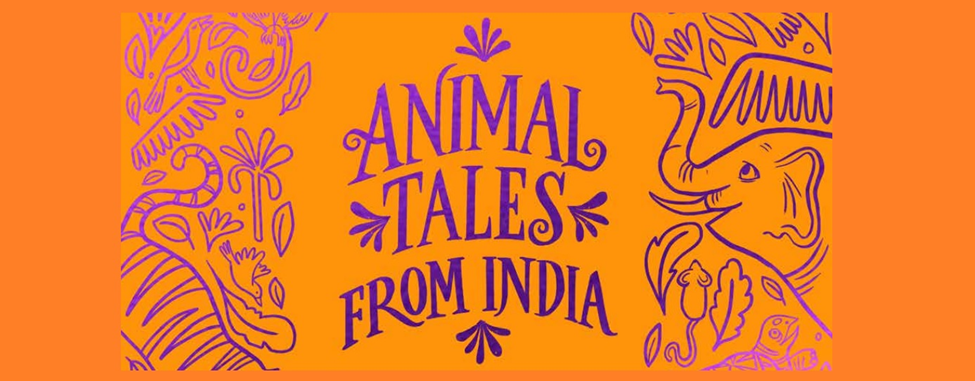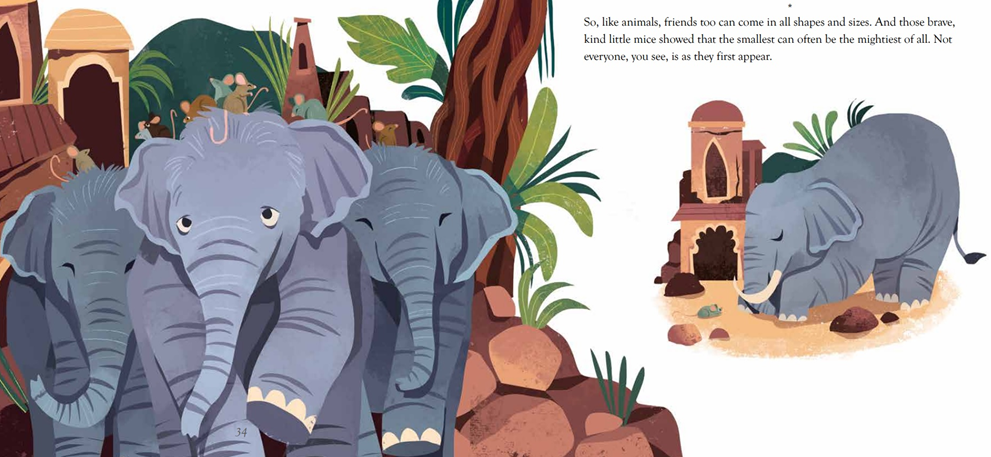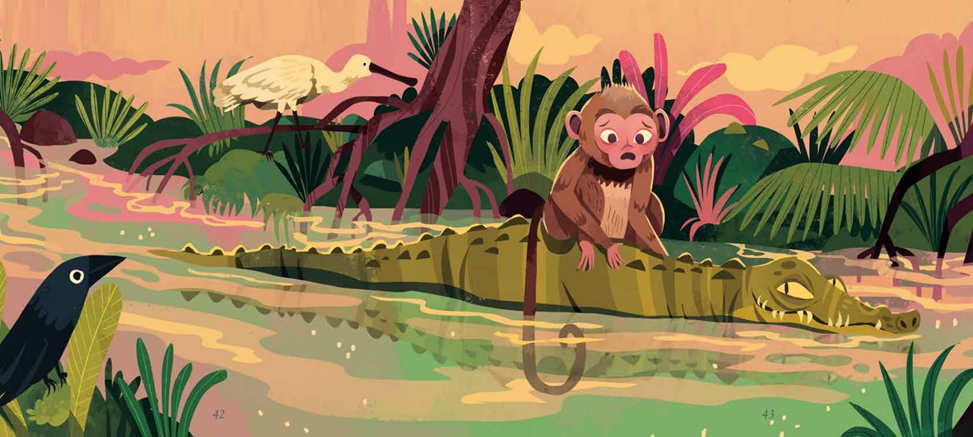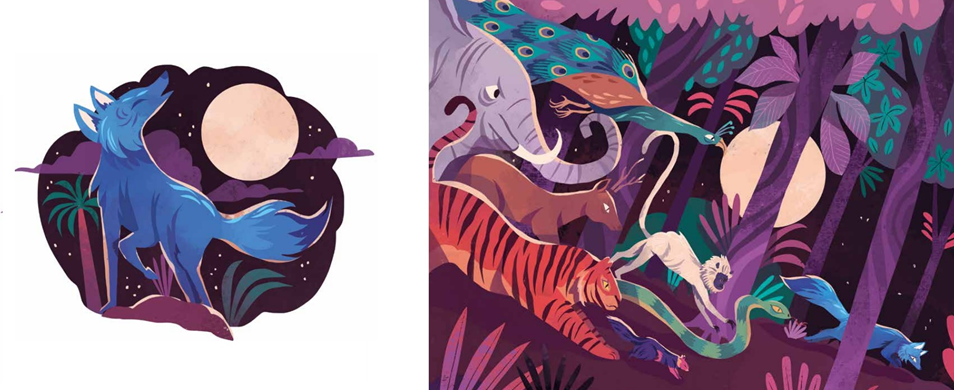Nikita Gill


About Author
Nikita Gill is an Irish-Indian poet with a world-wide fan-base of over 650,000 Instagram followers. Her poetry collections and plays offer a largely female readership the chance to recognise the value of their own experiences. Gill has written seven collections of poetry, and a novel in verse which highlights Hindu mythology.
Chaaya Prabhat is an illustrator and lettering artist from Chennai, India, currently based in Goa. She has worked on a number of picture books, including The Culture of Clothes, The Best Diwali Ever and Bracelets for Bina's Brothers. She previously worked on digital illustration projects for publishers.
Interview
Animal Tales from India (Nosy Crow)
October 2023
Poet and writer Nikita Gill grew up hearing stories from the Panchatantra, told by her grandmother. She is now sharing those same stories in Animal Tales from India, where you'll find crafty crocodiles, arrogant elephants and disloyal jackals, all of whom have a lesson to learn. Each of these stories, chosen and told by Nikita, offers us a lesson in wonder and humanity.
In this Q&A with Nikita Gill, we find out more about her collection of Animal Tales from India, why she wanted to write the book, and what she hopes today's children will find in its pages. The book is beautifully illustrated by Chaaya Prabhat

Q&A with Nikita Gill
"Children of Indian heritage being able to see their stories shared with the world is a powerful thing."
1. Can you tell us a little about yourself as a poet and a writer? What has brought you into writing for children?
As a writer, I read very diversely and I tend to read three books at once. For instance, right now I'm in the middle of a fairytale retelling, a biography and a historical fantasy. After that I will segue into a thriller, a middle grade novel and a romance. I think as a lover of books, it's hard to be genre specific, especially because I think to be able to write well, you should read very widely.
Life as a poet is to let yourself constantly be moved by the world that includes the joy but also the tragedy. I think that is also precisely why I wanted to write for children because keeping that sense of awe and your senses open to the world is such a large part of childhood and navigating it. That sense of wonder is so important for children's books. I think to give children a whimsical world is a great gift.

"There are many similarities with Aesop's fables, including the morals at the end of the stories, the talking animals and how each tale is a universal gift."
2. We'd love to know more about your Animal Tales from India; how have you drawn from the Panchatantra for these stories? What are the stories about, and how do they compare with Aesop's fables, which many families might already be familiar with?
My grandmother gave me the Panchatantra in the form of orally told stories, and told me that the tales she was telling me came from her grandmother. To retell those stories has been a great privilege and a whole joy. For me the tales of the Panchatantra have been so formative for my childhood. It is my grandmother's powerful storytelling voice in this book that shines.
There are many similarities with Aesop's fables, including the morals at the end of the stories, the talking animals and how each tale is a universal gift.
3. How important is it that children with Indian heritage see that their stories are being shared with the world?
Children of Indian heritage being able to see their stories shared with the world is a powerful thing. The other day when I was signing books, a six-year-old told me with sheer delight in her eyes that her grandmother told her these stories and she couldn't wait to share them with her classmates. I think because of Chaaya Prabhat's wonderful illustrations, these stories truly come to life and are meant to be read aloud and shared and experienced.
4. Why do you want to share these stories with today's children? What inspired you to put pen to paper?
I heard these stories from my grandmother as bedtime tales and I remember them giving me such a sense of safety and escape. That same sense of safety and escape is what I thought children across the world today deserve - especially in times of turbulence and instability, a story has the capacity to bring joy and hope. The Panchatantra was just that for me and Animal Tales from India hopes to replicate that!

"I loved the Monkey and the Crocodile, a story about a clever monkey outwitting a cunning crocodile."
5. Which stories were your favourites - and do they appear in your retelling?
I loved the Monkey and the Crocodile, a story about a clever monkey outwitting a cunning crocodile. I also loved the tale of a singing donkey who makes friends with a fox but doesn't listen to good advice. I'm very glad that both of these stories have found their way into Animal Tales From India.
6. How do your stories draw on the original stories in terms of the style of your storytelling?
I've tried to keep the ethos of the stories but bring my own style of poetic storytelling to the tales! For instance, the descriptions of the jungle or the way the animals speak to one another is my own, but the tale follows the same structure as the original narrative.
7. And how are your retellings different from the original Panchatantra books?
Truthfully, the original Panchatantra tales had some subjects I didn't want to give to children today as they were tales for their time. In some instances, I have written these subjects out of the stories to restore that sense of whimsy and escape while still holding the spirit of the lessons the stories give us. For instance, in the original Blue Jackal story, the jackal is beaten up at the end. Instead, I have simply said he was chased and then found his family who protected him - but the lesson remains that loyalty and telling the truth are important!

The story of The Blue Jackal, retold in Animal Tales from India: "The lesson remains that loyalty and telling the truth are important!"
8. How would you like to see your collection of stories shared with children, in schools and in homes?
I think Animal Tales from India would work brilliantly in the classroom for both reading hours and literacy encouragement. For older children in particular, the illustrations and text together would encourage more independent reading and for teachers, this book is excellent to introduce young people to many animal sounds as well as what animals look like - but also a great way to keep their class transfixed through storytelling.
9. Have you enjoyed seeing Chaaya Prabhat's illustrations for Animal Tales from India? Any favourites?
All of them are my favourites! Truly, it is so hard to pick a favourite because Chaaya's illustrations are so beautiful. The expressions on all the animals faces are so evocative, she really is the best to work with, too!
10. There are 84 stories in the original Panchatantra - are you planning to write more Animal Tales from India? Are there other stories from your childhood that you would like to share?
I would love to write more stories from the Panchatantra, or even further from the Jataka tales, another series of animal tales from India. I think with books, it completely depends if readers would like to read more of these tales, and if they do, I would only be too happy to write them.
 Animal Tales from India: Ten Stories from the Panchatantra
Animal Tales from India: Ten Stories from the Panchatantra
